Description
The Cathay Drug Co., Inc.
PRODUCT DESCRIPTION
Levofloxacin, a synthetic antibiotic under the flouroquinolone drug class, is used in the treatment of moderate to severe infection.
Levofloxacin (Loxeva) 500 mg is a yellow, oval, biconvex, film – coated tablet, bisected on one side and plain on the other side.
Levofloxacin (Loxeva) 750 mg is a white, oblong shaped, film – coated tablet, bisected on one side and plain on the other.
FORMULATION
Levofloxacin (Loxeva) 500 mg Film – Coated Tablet
Each film – coated tablet contains:
Levofloxacin (as hemihydrate), USP ……………………………….. 500 mg
Levofloxacin (Loxeva) 750 mg Film – Coated Tablet
Each film – coated tablet contains:
Levofloxacin (as hemihydrate), USP ……………………………….. 750 mg
PHARMACODYNAMICS
Levofloxacin is generally considered to be about twice as active as ofloxacin, the racemic substance. The antibacterial activity of Ofloxacin resides primarily in the L-isomer. The mechanism of action of Levofloxacin inhibits bacterial topoisomerase IV and DNA gyrase (both of which are type II topoisomerases), enzymes required for DNA replication, transcription, repair and recombination.
Levofloxacin has in vitro activity against a wide range of gram-negative and gram-positive microorganisms. Among gram-negative aerobic microorganisms, Levofloxacin may be active in vitro against Enterobacter cloacae, Escherichia coli, Haemophilus influenzae. Haemophilus parainfluenzae, Klebsiella pneumoniae, Legionella pneumophila, Moraxella catarrhalis, Proteus mirabilis, Pseudomonas aeruginosa and Serratia marcescens. Among gram-positive aerobic microorganisms, Levofloxacin is active against Enterococcus faecalis (many strains are only moderately susceptible), Staphylococcus saprophyticus, Streptococcus pneumoniae (including multi-drug resistant strains [MDRSP]) and Streptococcus pyogenes.
PHARMACOKINETICS
Absorption and Distribution
Levofloxacin is rapidly and almost completely absorbed after oral doses with peak plasma concentrations occurring within 1 to 2 hours. It is widely distributed in body tissues including the bronchial mucosa and lungs, but penetration into cerebrospinal fluid is relatively poor. Levofloxacin is about 30 to 40% bound to plasma proteins.
Metabolism and Excretion
Levofloxacin is only metabolized to a small degree to inactive metabolites. The elimination half-life of levofloxacin is 6 to 8 hours, although this may be prolonged in patients with renal impairment. Levofloxacin is excreted largely unchanged, primarily in the urine with less than 5% as metabolites. It is not removed by hemodialysis or peritoneal dialysis.
INDICATIONS
Levofloxacin (Loxeva) is indicated for the treatment of susceptible infections including:
- Community-acquired pneumonia due to Staphylococcus aureus, Streptococcus pneumoniae, Klebsiella pneumoniae, Chlamydia pneumoniae, Haemophilus influenzae, Haemophilus parainfluenzae, Mycoplasma pneumoniae, Moraxella catarrhalis or Legionella pneumophilia.
- Acute bacterial exacerbation of chronic bronchitis due to Staphylococcus aureus, Streptococcus pneumoniae, Moraxella catarrhalis, Haemophilus influenzae, or Haemophilus parainfluenzae.
- Acute maxillary sinusitis due to Streptococcus pneumoniae, Moraxella catarrhalis, or Haemophilus influenzae
- Complicated and uncomplicated skin and skin structure infections (mild to moderate) including abscesses, cellulitis, furuncles, impetigo, pyoderma, wound infections, due to methicillin-sensitive Staphylococcus aureus, Streptococcus pyogenes, Enterococcus faecalis or Proteus mirabilis
- Chronic bacterial prostatitis due to Escherichia coli, Enterococcus faecalis or Staphyloccoccus epidermidis
- Acute pyelonephritis caused by Escherichia coli
- Complicated and uncomplicated urinary tract infections including abscesses, cellulitis, furuncles, impetigo, pyoderma, wound infections due to Streptococcus pyogenes or Staphylococcus aureus
DOSAGE AND ADMINISTRATION
Usual adult dose range: 250 mg to 500 mg once or twice daily and 750 mg once daily depending on the type of infection (e.g. nosocomial pneumonia, community acquired pneumonia, complicated skin and skin structure infections, complicated urinary tract infection or acute pyelonephritis).
Doses should be reduced in patients with renal impairment.
| Dosage in Normal Renal Function Every 24 hours | Creatinine Clearance 20 to 49 mL/min | Creatinine Clearance 10 to 19 ML/min | Hemodialysis or Chronic Ambulatory Peritoneal Dialysis (CAPD) |
| 750 mg | 750 mg every 48 hours | 750 mg initial dose, then 500 mg every 48 hours | 750 mg initial dose, then 500 mg every 48 hours |
| 500 mg | 500 mg initial dose, then 250 mg every 24 hours | 500 mg initial dose, then 250 mg every 48 hours | 500 mg initial dose, then 250 mg every 48 hours |
| 250 mg | No dosage adjustment required | 250 mg every 48 hours. If treating uncomplicated UTI, then no dosage adjustment is required | No information on dosing adjustment is available |
Dosage in pediatric patients with inhalational Anthrax (post-exposure)
- Pediatric patients > 50 kg and > 6 months of age: 500 mg every 24 hours for 60 days.
- Pediatric patients < 50 kg and > 6 months of age: 8 mg/kg twice daily for 60 days (not to exceed 250 mg per dose).
Or as prescribed by the physician.
CONTRAINDICATIONS
Levofloxacin is contraindicated to patients who have hypersensitivity reactions to the drug or any other quinolones. Levofloxacin should be used with caution in patients with epilepsy or a history of CNS disorders.
PRECAUTIONS
Symptomatic hyperglycemia and/or hypoglycaemia have been reported, usually in diabetics who are also taking hypoglycemics or insulin. Such patients should have their blood-glucose concentrations closely monitored and if signs or symptoms of glucose disturbance develop, levofloxacin should be discontinued. Myasthenia gravis may interfere with diagnostic tests. Avoid exposure to excessive sunlight.
WARNINGS
Quinolones including levofloxacin, are associated with an increased risk of tendinitis and tendon rupture in all ages. The risk is further increased in people over 60 years old, in kidney, heart, or lung transplant recipients, and with concomitant steroid therapy.
Patients taking corticosteroids and in patients with kidney, heart or lung transplants.
ADVERSE EFFECTS
| Gastrointestinal | nausea, vomiting, diarrhea, abdominal pain, dyspepsia, pseudomembranous colitis, pancreatitis and dysphagia |
| CNS effects | headache, dizziness, confusion, insomnia, restlessness |
| Visual and sensory disturbance | tremor, drowsiness, nightmares, hallucinations, psychotic reactions, depression, convulsion, intracranial hypertension, paraesthesia, and peripheral neuropathy |
| Hypersensitivity reactions | rash, pruritus, vasculitis, erythema multiforme, Steven-Johnson syndrome and toxic epidermal necrolysis |
| Haematological disturbance | eosinophilia, leucopenia, thrombocytopenia and very rarely pancytopenia, haemolytic anaemia or agranulocytosis |
| Cardiovascular | tachycardia, hypotension, edema, syncope, hot flushes and sweating |
| Photosensitivity/ Phototoxicity (moderate to severe) | Burning, erythema, exudation, vesicles, blistering and edema |
| Other effects | crystalluria, transient increase in serum creatinine or blood urea nitrogen (BUN), elevated liver enzyme values, jaundice, hepatitis, and rarely acute renal failure secondary to interstitial nephritis |
DRUG INTERACTIONS
- Fluoroquinolones
Fluoroquinolones may inhibit the cytochrome P450 isoenzyme CYP1A2 and may increase plasma concentrations of drugs, such as theophylline and tizanidine that are metabolized by this enzyme
- Oral anticoagulants
Oral anticoagulants such as warfarin and glibenclamide may result in sever hypoglycaemia; renal tubular secretion of methotrexate may be inhibited by levofloxacin potentially by increasing its toxicity.
- Probenecid
The excretion of levofloxacin may be reduced and plasma concentrations may be increased when given together with probenecid.
- Metal ions
Metal ions such as aluminum, calcium, magnesium or iron reduced the absorption of oral ciprofloxacin.
- Histamine H2-antagonists
Possible changes in gastric pH may occur when given with levofloxacin.
- Phenytoin
The serum concentrations may be altered.
- Anti-arrhythmics
Anti-arrhythmic drugs such as quinidine, procainamide, amiodarone and sotalol may prolong the QT interval which may progress to torsade de pointes.
- Antacids, sucralfate, metal cations and zinc-containing multivitamin preparations
The gastrointestinal absorption of levofloxacin may be interfered resulting in systemic levels considered lower than desired when given together with these preparations.
- Drugs that alter blood-glucose concentrations with levofloxacin
Co-administration of levofloxacin with these agents can increase the risk of blood-glucose disturbances
- Concomitant use of drugs such as antihistamines, astemizole, terfenadine, cisapride, erythromycin, pentamide, phenothiazines or tricyclic antidepressants should be used with caution.
- Levofloxacin does not appear to interact significantly with theophylline or cyclosporin.
PREGNANCY AND LACTATION
Levofloxacin is contraindicated in children, pregnant women and nursing mothers. Safe use during pregnancy and lactation has not been established and should therefore not be administered.
AVAILABILITY
Levofloxacin (Loxeva) 500 mg Film – Coated Tablet: Aluminum Strip foil x 10’s (Box of 30’s).
Levofloxacin (Loxeva) 750 mg Film – Coated Tablet: Cello/Aluminum/Polyethylene Strip foil x 4’s (Box of 20’s).
STORAGE
Store at temperatures not exceeding 30°C.
Manufacturer:
Hizon Laboratories, Inc.
Assumption Road, Sumulong Highway
Antipolo City
Marketing Authorization Holder
The Cathay Drug Co., Inc.
2/F Vernida I Condominium
120 Amorsolo St. Legaspi Village
Makati City
Date of revision: July 2, 2019

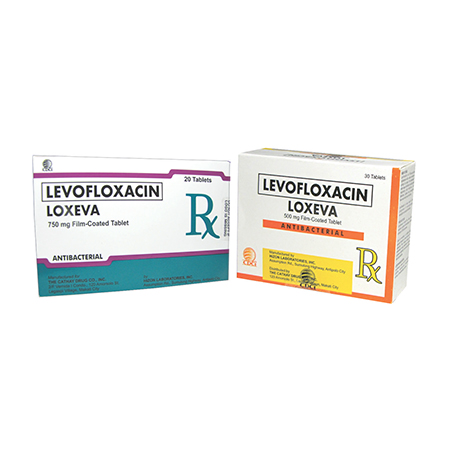
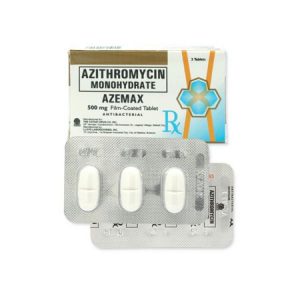
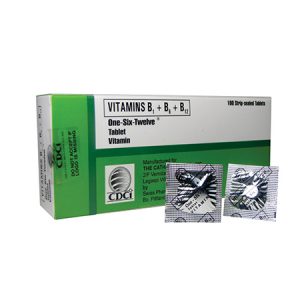
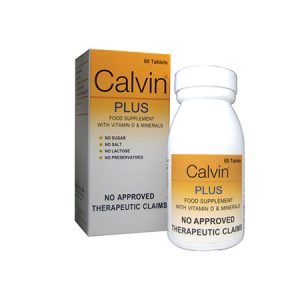
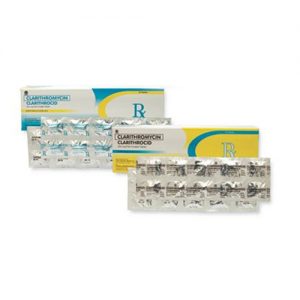
Reviews
There are no reviews yet.